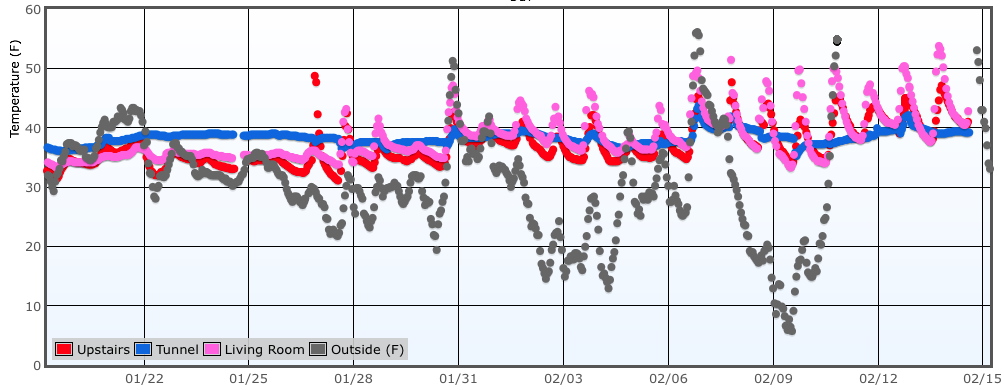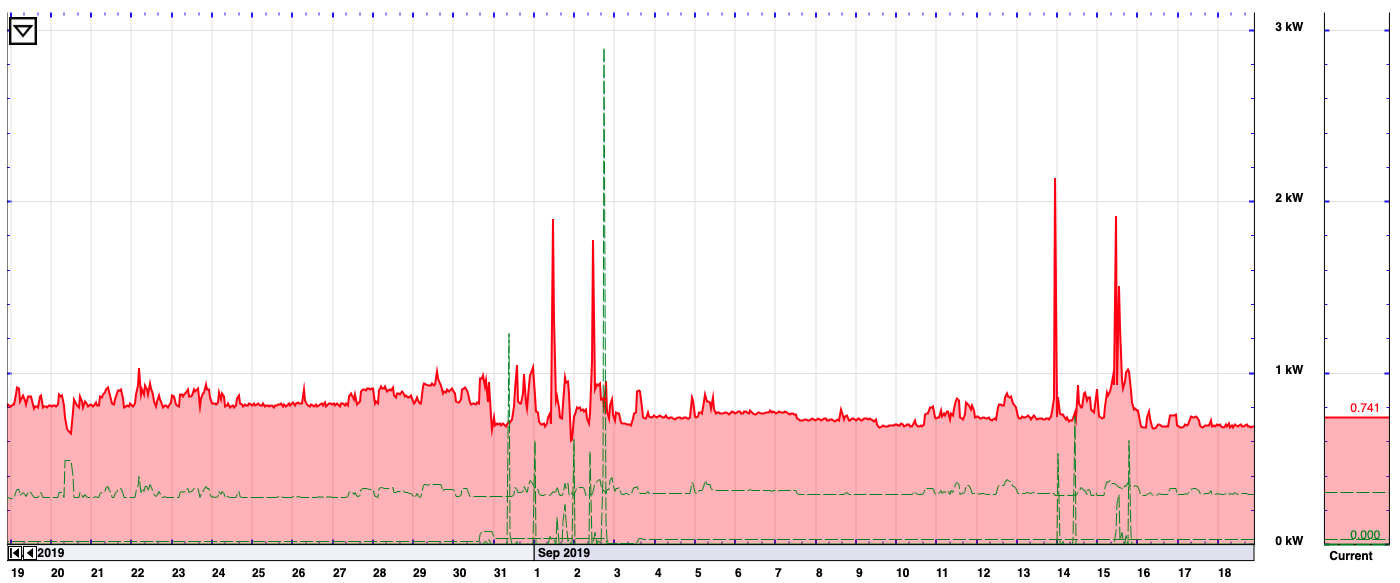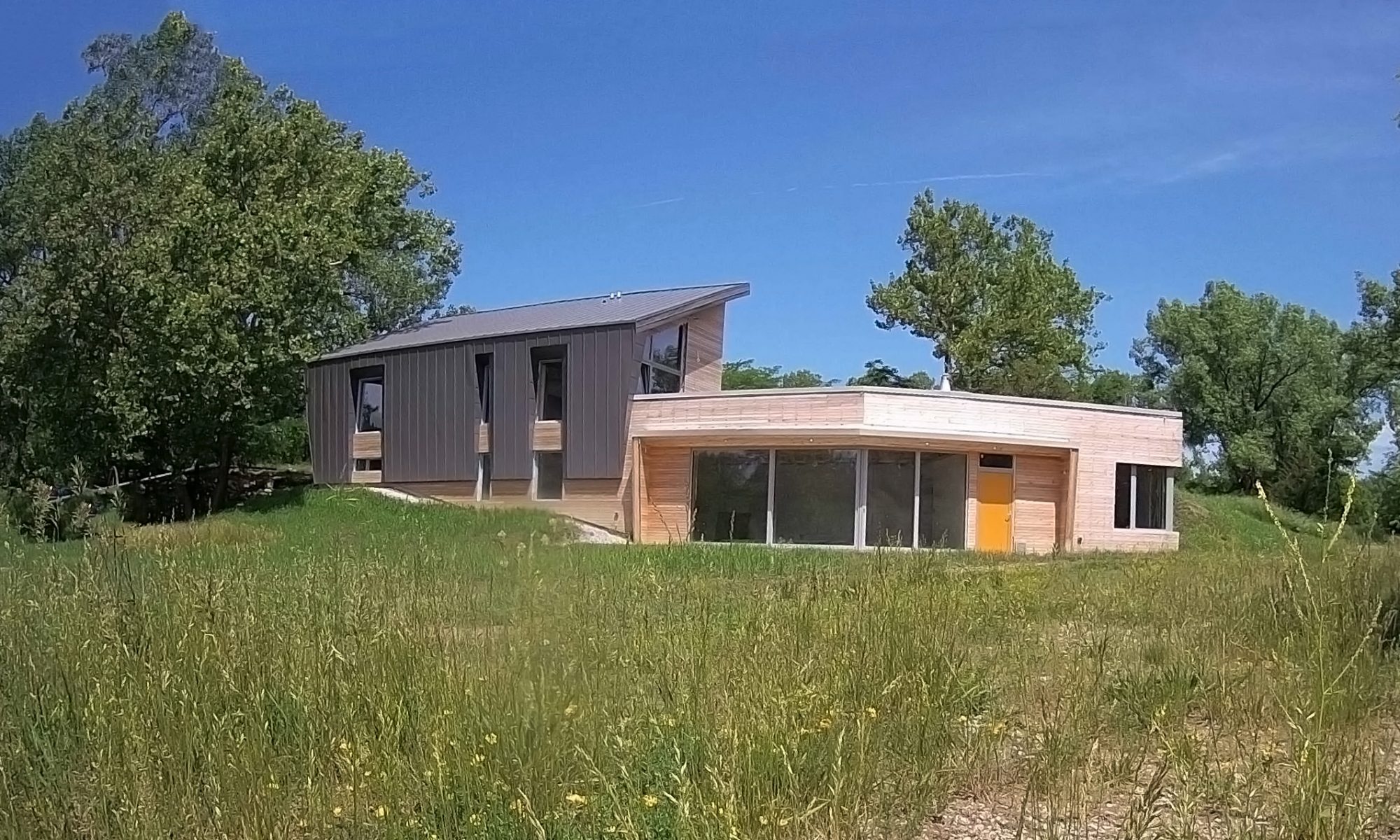The proof of the pudding is, as they say, is in the eating. But eating a house is ill-advised, so we’re monitoring it instead. Specifically, we want to know:
- How much energy is the house using? Is it living up to its energy goals?
- What’s using the energy? How does this compare to our assumptions?
- Is the home staying comfortable? Recall that this house is designed with no conventional air conditioning. Can it maintain comfort in hot, humid Iowa summers?
- How does the home operate passively? — i.e. without active heating or cooling?
To that end, we are continuously monitoring temperature, relative humidity, and energy use.

We've been monitoring temperature and relative humidity in the house since January 2017, just prior to window installation. Three sensors capture data in 15-minute increments and send the data wirelessly to a server. The system (including the webpage that displays the data) is a custom creation of one of the homeowners.
You can explore the data for yourself here.

We've been monitoring energy use since July 2019, just after occupancy. We use an eGauge system, with individual monitoring of all major appliances and on each zone of the electric radiant heating system. This system will also monitor the production of the solar panels once installed.
You can explore the data here.
Summary
You can see all blog posts related to monitoring here.
As of March 2025, here are answers to the four questions outlined above:
- How much energy is the house using? The baseline energy use is a mere 100W (~$10/mo), from the refrigerator, ERV, and internet equipment. Add heating, cooking, and hot water, and we’re at about 570kWh/mo (~$57) . The home uses 90% less than a conventional new home, and 54% less than predicted — and that’s before adding solar!
- What’s using the energy? Based on the first 3 years of data, heating, dehumidification, and plug loads are the largest uses. Dehumidification was not factored into the early energy models, but ended up being necessary to maintain comfort. Some atypical plug loads (servers & workshop) were also not accounted for in the original analysis, but are significant energy users.
- Is the home staying comfortable? Yes; however, dehumidification was added to maintain summertime comfort and avoid mildew issues. Summertime temperatures do go beyond the standard comfort range, but passive strategies like air movement, cool surfaces, and shading help to expand the comfort zone.
- How does the home operate passively? During the polar vortex in January 2018, the home was complete but not yet occupied. With outdoor temperatures dipping to -26 degF, the home’s interior temperatures averaged ~50 degF — with NO heating. That’s a delta of ~70 degF through passive design alone.
Further Analysis
You can find posts I’ve written analyzing the results of our data collection here.
